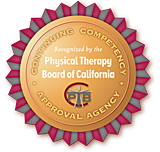
Learning The Method
MNRI® Introduction to Intronauts and Infant Reflexes Integration
MNRI® INTRODUCTION TO INTRONAUT AND INFANT REFLEXES INTEGRATION
MNRI® Introduction to Intronaut and Infant Reflexes Integration is a 24 hour course offering information on specific neurosensorimotor exercises for the mother and intronaut during pregnancy and birth, and neurosensorimotor exercises for the infant during the first 10 days of the infant’s life and during the first year of life. This course will offer specific information important to the health and well-being of the mother and child based of the concept of reflex integration. Each exercise will be completely explained, demonstrated and practiced during the course content.
Learner Objectives
- Explain the Masgutova Neurosensorimotor Reflex Integration (MNRI®) Method and its scientific origins.
- Explain the role of a primary reflex and its sensory, motor and central nervous system mechanisms.
- Describe the progression of primary motor reflex patterns, beginning in utero and continuing through life.
- Explore the impact of trauma on primary motor reflex patterns, the protective role immature reflexes play and the negative impact protection can have on a mother’s and infant’s ability to self-regulate, learn, develop, and grow.
- Explain why it is essentialto support brain development through the application of archetype movements and basic reflex patterns and explain how this effects overall development.
- Describe how specific archetype movements and basic reflex patterns can be used as a preventive tool for individuals who have been affected from birth by unintegrated reflex patterns and birth stress and trauma.
- Analyse how to support the infant’s brain development during pregnancy through the first year of life.
- Explain how neurosensorimotor reflex integration provides a preventive tool for both mother and infant, who may have been impacted by reflexes effected by stress during pregnancy, birth and the first year of life.
- Describe how to create and apply an individual MNRI® program for mothers and infants with various challenges.
- 10. Describe the process in which an intronaut learns and trains itself for all reflexes which leads to further self-training for birth during the last two weeks before delivery.
- Analyse information and techniques to support the intronaut, newborn, and infant’s successful reflex development.
- Describe specific milestone stages and why they are classified into three categories: motor development, language development, and social/emotional development.
- Explain how additional milestones, such as sensory-motor integration and reflex maturation, are important for the infant’s health, well-being, growth and development.
- Describe how the course specific exercises for pregnant women improves the growth and development of the intronaut, as well, as it’s mother.
- 15. Under supervised practice, demonstrate the modified reflexes exercises for pregnant women.
- Describe how the course specific exercises for pregnant women improves the birth process and delivery of the infant and over-all wellbeing of the mother.
- Demonstrate the modified reflex exercises to assist in the birth and delivery for the infant and mother under supervised practice.
- Describe how the course specific exercises for the newborn infant during the first 10 days of life offer a strong foundation for overall growth and development as well as life-long reflexes.
- Describe how the course specific exercises for the mother of a newborn infant (first 10 days of life) offer a quicker and less stressful recovery from the trauma delivery.
- Demonstrate the modified reflex exercises for the new born infant during the first 10 days of life under supervised practice.
- Demonstrate the modified reflex exercises for the mother to assist in a quicker and less stressful recovery from the trauma delivery, under supervised practice.
- Describe the impact of the following exercises will improve growth, development and resilience for an infant during the first year of life: Hand/Arm Reflex Patterns, Foot and Leg Reflex Patterns, Post-birth and HPA Stress-Axis patterns, Emotional Stability and Development Reflex Patterns, Oral-Facial and Visual-Auditory Reflex Patterns, Cognitive Activity Reflex Patterns, and Traveling Reflex Patterns.
- Demonstrate the modified reflex exercises for Hand/Arm Reflex Patterns, Foot and Leg Reflex Patterns, Post-birth and HPA Stress-Axis patterns, Emotional Stability and Development Reflex Patterns, Oral-Facial and Visual-Auditory Reflex Patterns, Cognitive Activity Reflex Patterns, and Traveling Reflex Patterns.
- Describe, evaluate and develop strategies to incorporate the use of the MNRI Intronaut and Infant Reflex Integration course content into daily client and home practice.
Time Agenda
Hour 1: Masgutova Method and scientific origins
Hour 2: Primary reflexes
Hour 3: Primary reflex patterns beginning in utero
30-minute meal break
Hour 4: Impact of trauma on primary motor reflex patterns
Hour 5: Archetype movements support for brain development
Hour 6: Archetype movements as a preventative tool
Break
Hour 7: Support for the infant’s brain
Hour 8: Neurosensorimotor Reflex Integration as a preventative tool
Hour 9: Creation of MNRI Program for infants with challenges
30-minute meal break
Hour 10: Reflexes for birth
Hour 11: Techniques for intronauts and newborns
Hour 12: Motor, language and social/emotional development
Break
Hour 13: Additional developmental milestones and reflex maturation
Hour 14: Growth and development of intronaut
Hour 15: Modified reflex patterns
30-minute meal break
Hour 16: Exercises for the birth process and delivery
Hour 17: Review previous days techniques
Hour 18: Techniques for newborns during the first 10 days of life
Break
Hours 19-20: Techniques for newborns during the first 10 days of life
Hours 21: Techniques to improve growth and development for infants
30-minute meal break
Hours 22-23: Techniques to improve growth and development for infantsl
Hour 24: Review and develop strategies to use in daily and home practice.




